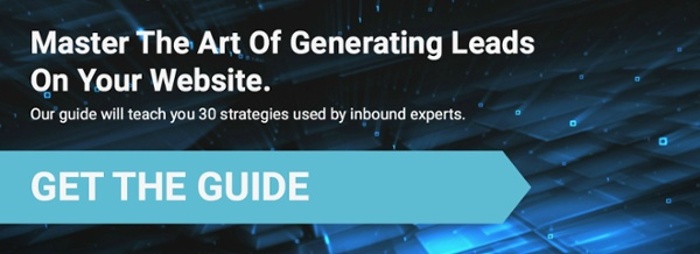
SaaS Marketing Metrics that Will Help Your Business Grow
Patrick Dodge
Founder
SaaS startups are masters of data. They know how to generate it, manage it, and learn from it.
But when it comes to sales and marketing, they are not always clear about which KPIs really matter, and which ones sound good but don’t really contribute to growth.
If you are using a robust marketing platform like HubSpot or Marketo, you will find it easier to track these numbers and move them in a positive direction. If not, you will need to cobble together the tools to get you the insights you need.
First, we will split these variables into two groups: Sales Growth and Business Growth.
Sales growth metrics will enable you to see how your campaign mechanics are increasing the customer base, whereas the business growth metrics will show you how the revenue generated from each customer compares to the cost of gaining them. This will give you a better picture of the overall health of your business.
Sales Growth
Visitors-to-Leads
You can’t get new customers online without bringing lots of visitors to your website.
But not every visitor is a quality one, and if you have a low visitor-to-lead ratio, you are likely attracting the wrong visitors to your website.
For instance, let's say your company sells social collaboration apps to enterprise companies. You are attracting engineers to your site with blog posts about development hacks and tricks with your platform, but you aren't getting any leads. The reason is likely because you are attracting the wrong audience. By shifting your content focus to helping other stakeholders in the organization solve problems -- like the communications or operations manager -- you will establish a relationship with someone who has the authority and motive to seek a solution like you provide.
Pro Tip: Use keyword listening apps and forums (including Reddit and Quora) to gain better insights into what your customers want to know, then use your blog and videos to answer those questions.
Conversion Rates to Strive For
Your visits-to-lead metric is an important one to track because it gives you an understanding of how well your website is converting top-of-funnel leads.
Multiple factors will influence performance, including calls-to-action, landing pages, and content offers, but according to our friends at Impact, the median conversion rate is around 3-5.5%.
If you can hit that benchmark early on, congratulations! You are in the middle of the pack.
Set your sights on increasing your conversion rate to 9-12% by pumping up your offers with exceptional value, and drive traffic to them like crazy with your content.
Leads-to-Customers
So, you’re attracting qualified visitors to your website, testing different offers and getting leads – now it’s time to find a good lead-to-customer conversion rate.
When someone opts-in for one of your top-of-funnel offers, the worst thing you can do is start hammering him/her with emails about a free demo or consultation. Nine times out of ten, they are not ready to talk to you.

These people are trying to solve a challenge with your content, while evaluating your brand at the same time. You need to nurture them along, and that takes time.
Gather the insights collected in your CRM – not only public data like company size, industry, and form data, but also things you’ve learned through their behavior on your site – and deliver these prospects timely, relevant messages that add value to their learning.
Your job is to give value until it hurts, and always direct them back to your website for more.
If you entice them back, they may take another action indicating they are ready to move to the “consideration phase” of a purchase. They may sign up for a webinar, download a guide, or grab a tipsheet comparing the pros and cons of your paid solutions. Now you’ve got a Marketing Qualified Lead (MQL).
If the MQL meets specific criteria that makes them a good fit for your company, they become a Sales Qualified Lead (SQL). Once you’ve gotten them to a point where they ask for an assessment or demo – you know they are ready to speak to someone on the sales team.
Conversion Rates to Strive For
This is a tough number to generalize. Customer acquisition rates vary due to sales cycle length, competition, industry type, and multiple other factors that influence how many opportunities it takes to strike gold.
If you are a B2B enterprise that offers a product that requires extensive research and budgeting before a purchase, it’s not unreasonable to expect your lead-to-customer ratio to be as high as 50:1.
Whether or not this ratio is a winning proposition will depends on your business growth metrics, and how customer lifetime value compares to your acquisition cost. Let's look at the big picture.
Business Growth

Customer Lifetime Value vs. Acquisition Cost
These variables help organizations determine the overall health of their business plan, and give them indicators of which channels provide the greatest ROI.
Customer Lifetime Value calculates the average revenue you earn throughout your relationship with a customer. Start by determining how long the average customer stays with your business in terms of months or years (churn rate), then figure out what they spend in that unit of time.
If you retain customers for an average of two years, and they spend $100,000 a year with you, your CLV is $200,000. Easy enough.
Customer Acquisition Cost is how much you spend to acquire a new customer. This includes software, salaries, and other expenses that help feed the lead generation machine. If you invest in $275,000 for sales and marketing, and get 300 customers out of it, your customer acquisition cost is $917.
When you’ve found good figures for CLV and CAC, you’ll want to look at the ratio between the two. A high CLV compared to a low CAC is a strong indicator of a healthy trajectory for your SaaS business.
If you are a new startup, your first priority will be optimizing customer acquisition through the sales growth metrics outline above:
- Visitors-to-Leads – maximizing qualified visitor volume, increasing CTA clicks, and boosting conversions.
- Leads-to-Customers – enticing your leads to convert to new lifecycle stages in their journey (MQLs and SQLs lifecycle stages).
As you continue to improve the metrics of your campaign, your CAC will go down. Once you have a good sized subscriber base, increasing attention on lengthening your customer lifetime will make sense. It costs less to keep existing clients happy than to find new ones, so exploring ways to delight them long after the sale is a good idea.
As you build out your marketing and sales strategy to include email, social media marketing, advertising and other tactics, you will discover a veritable galaxy of metrics to explore. Do not get distracted by anything that has no bearing on your ultimate goal: increasing sales and lowering costs.
That's the recipe for SaaS marketing success.
Nov 17, 2017 11:23:07 AM


